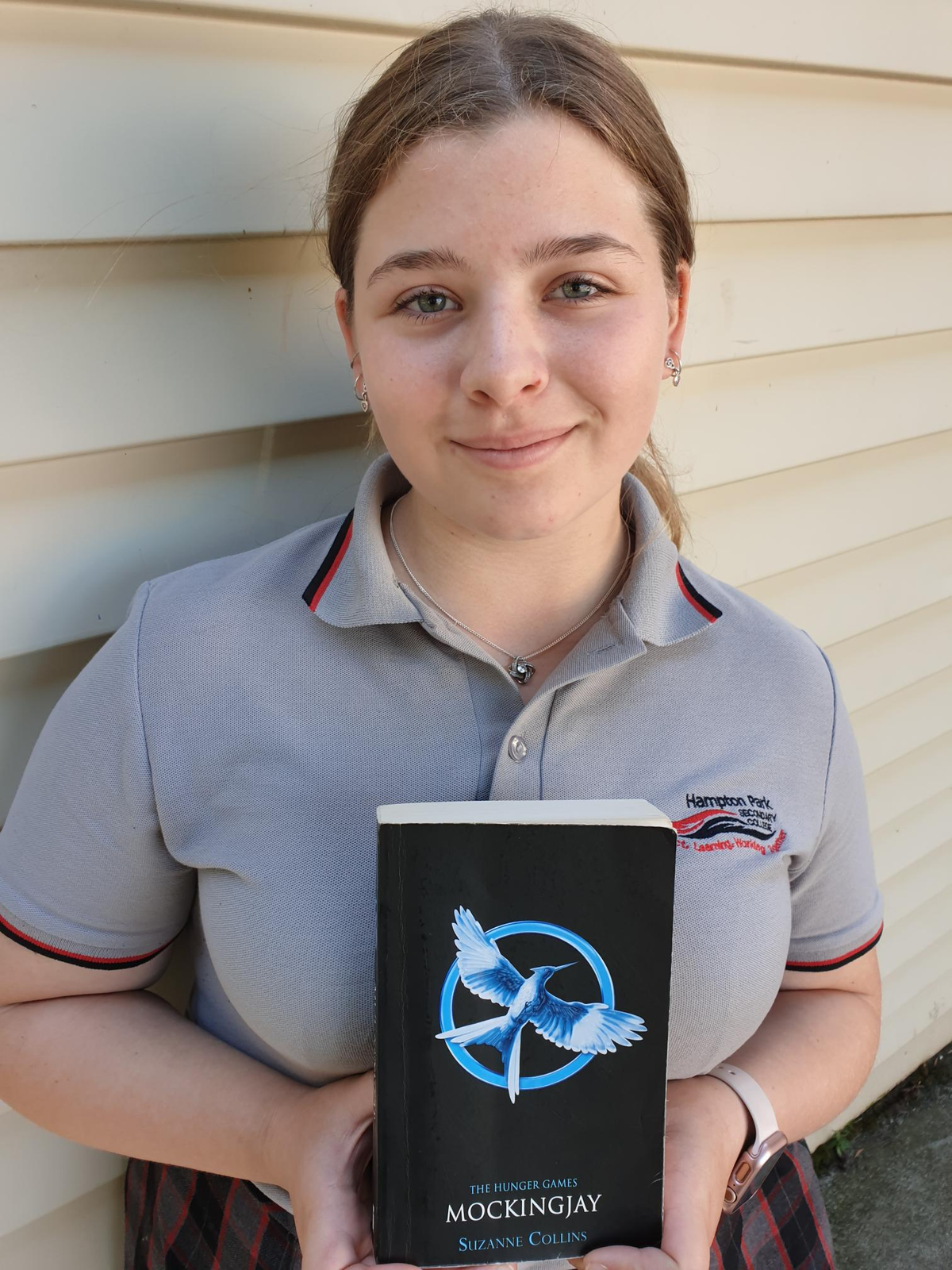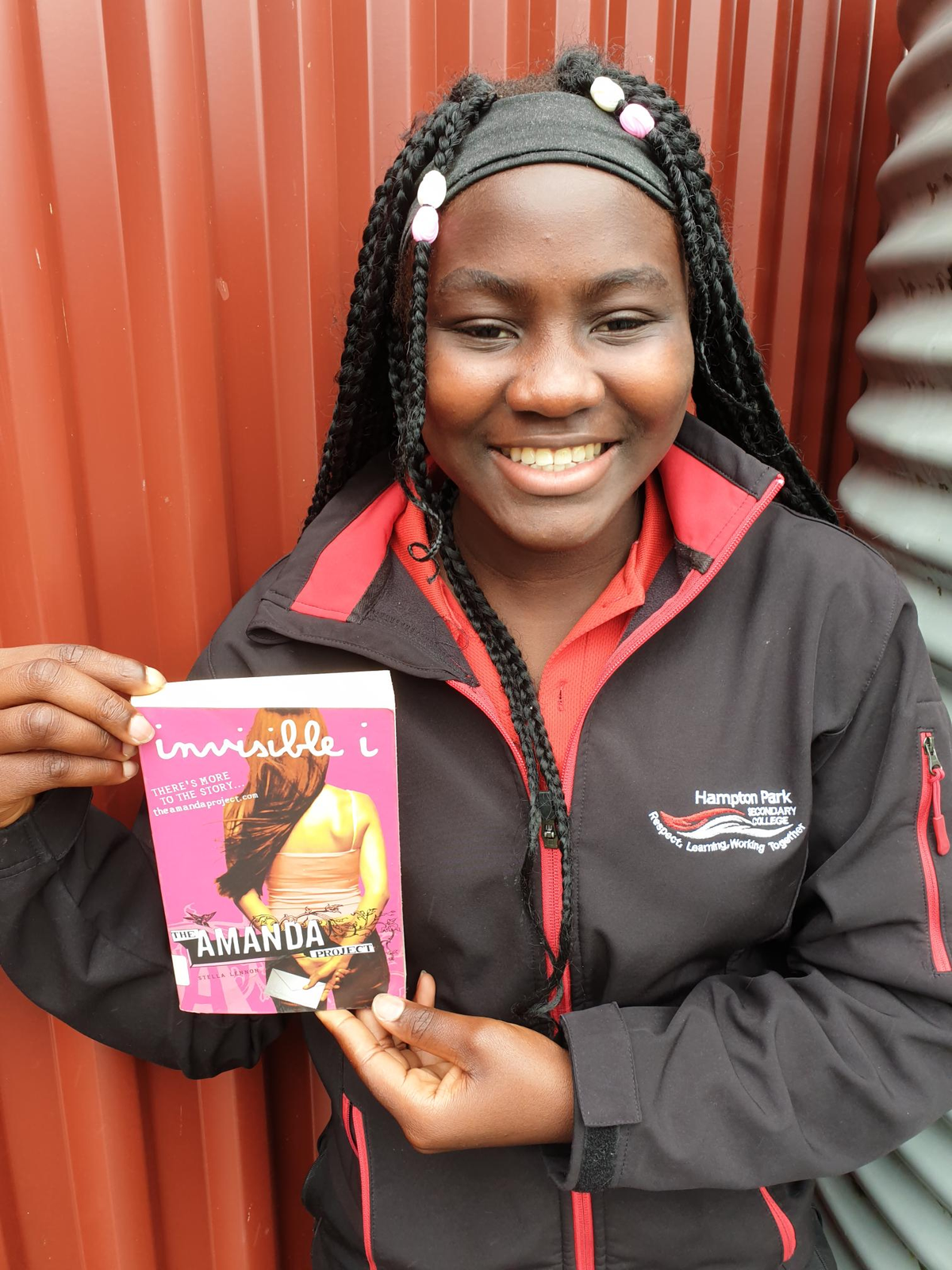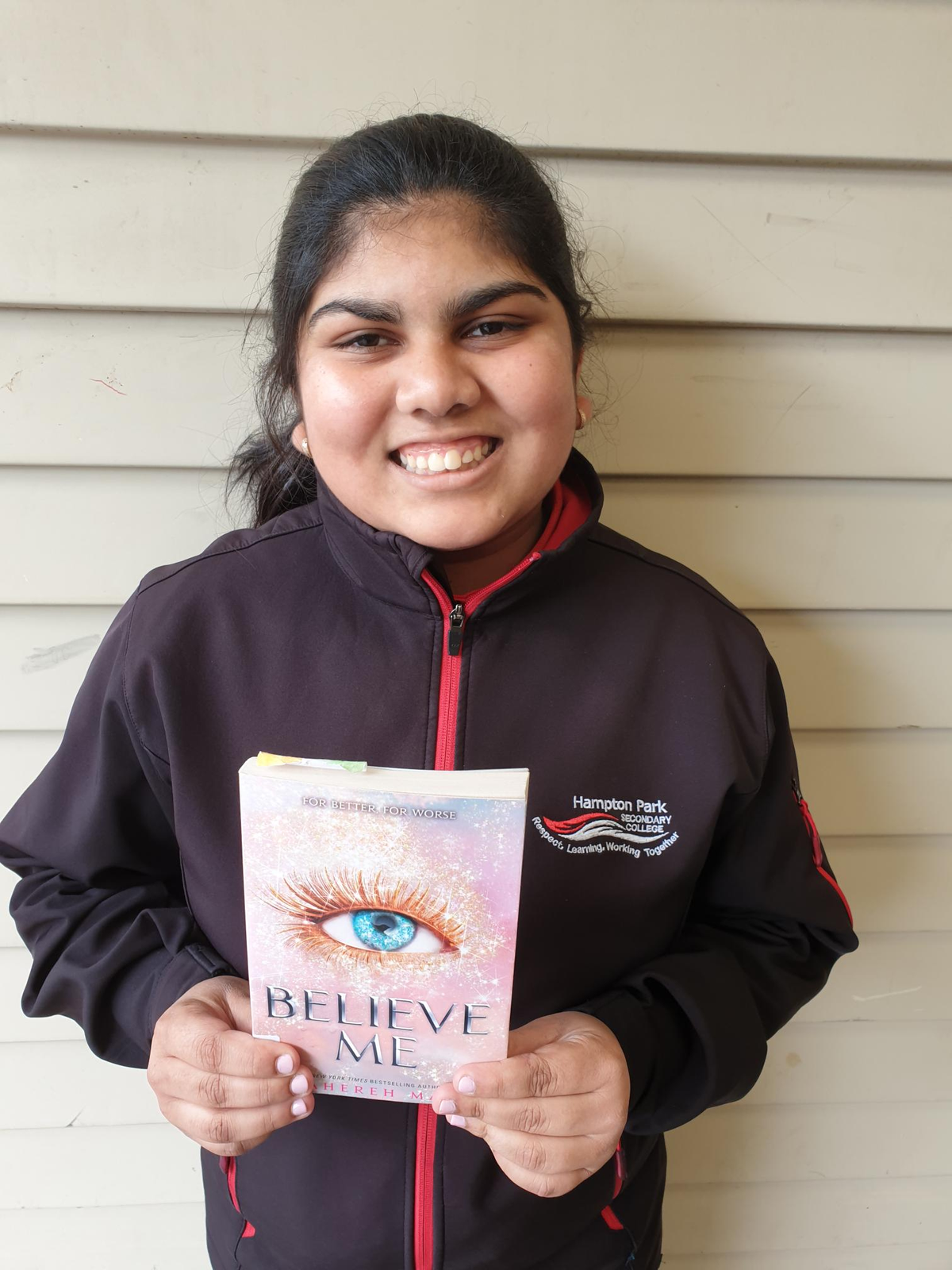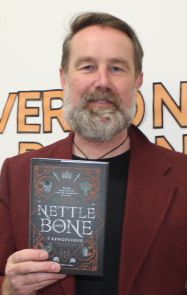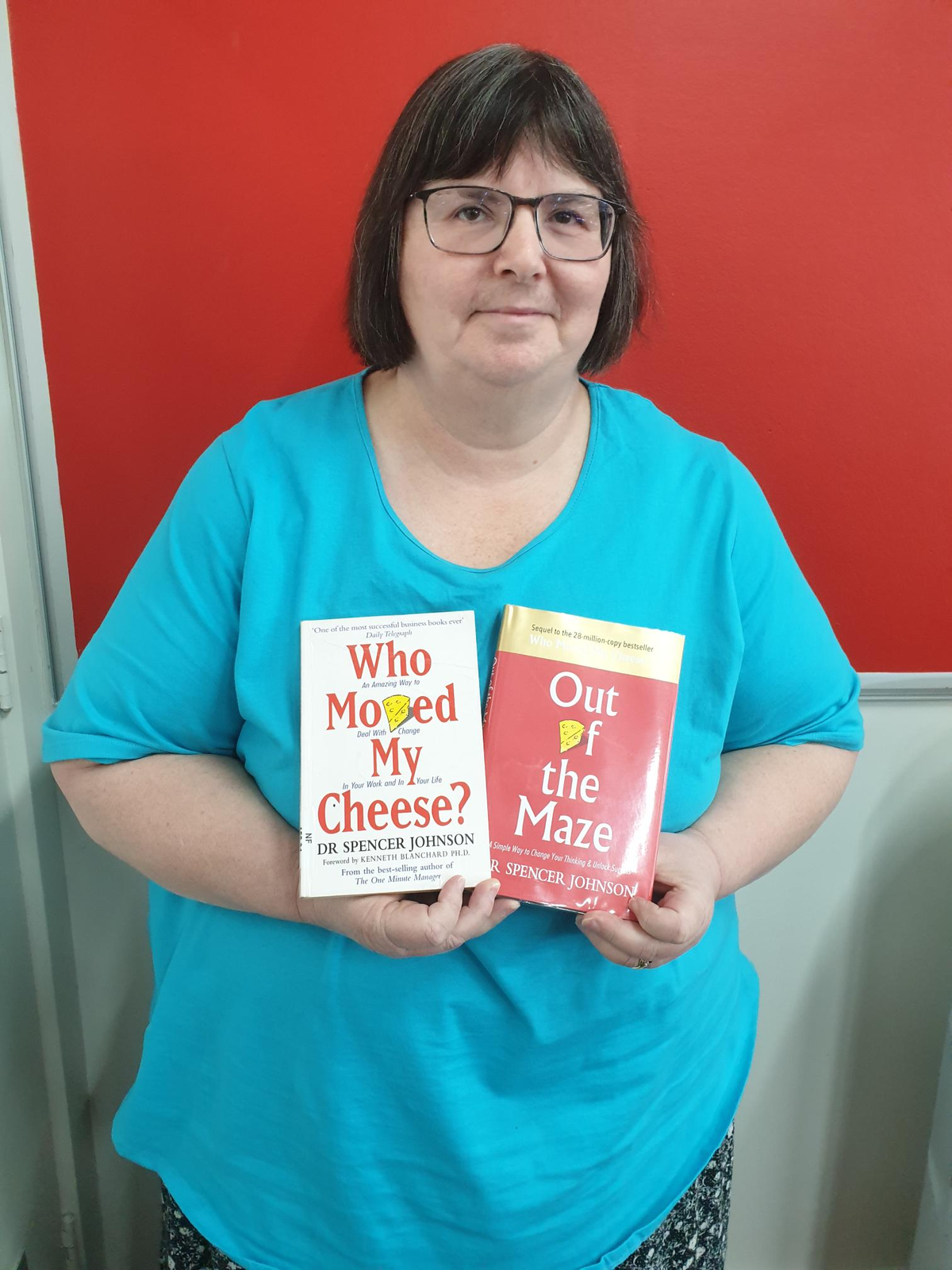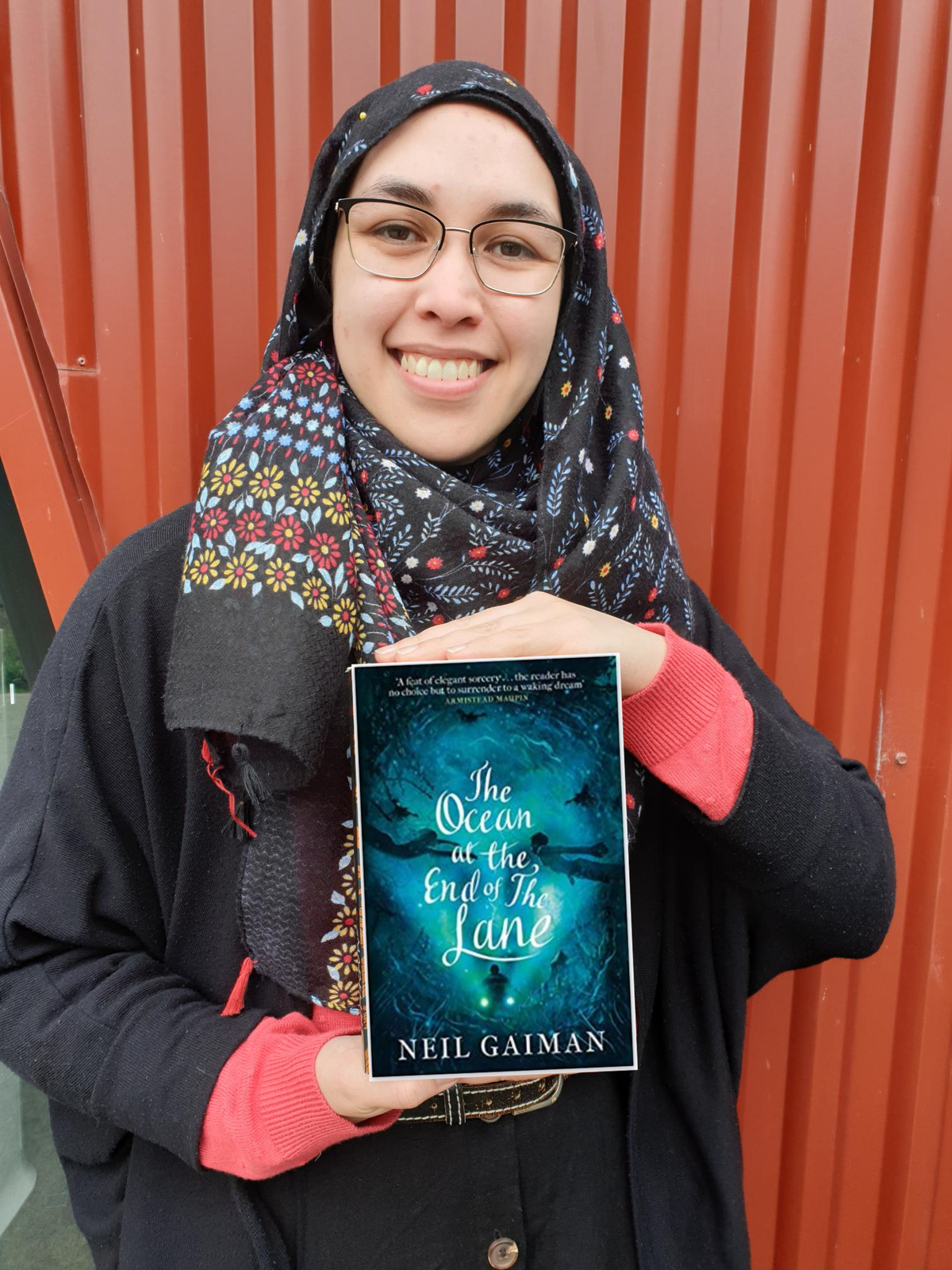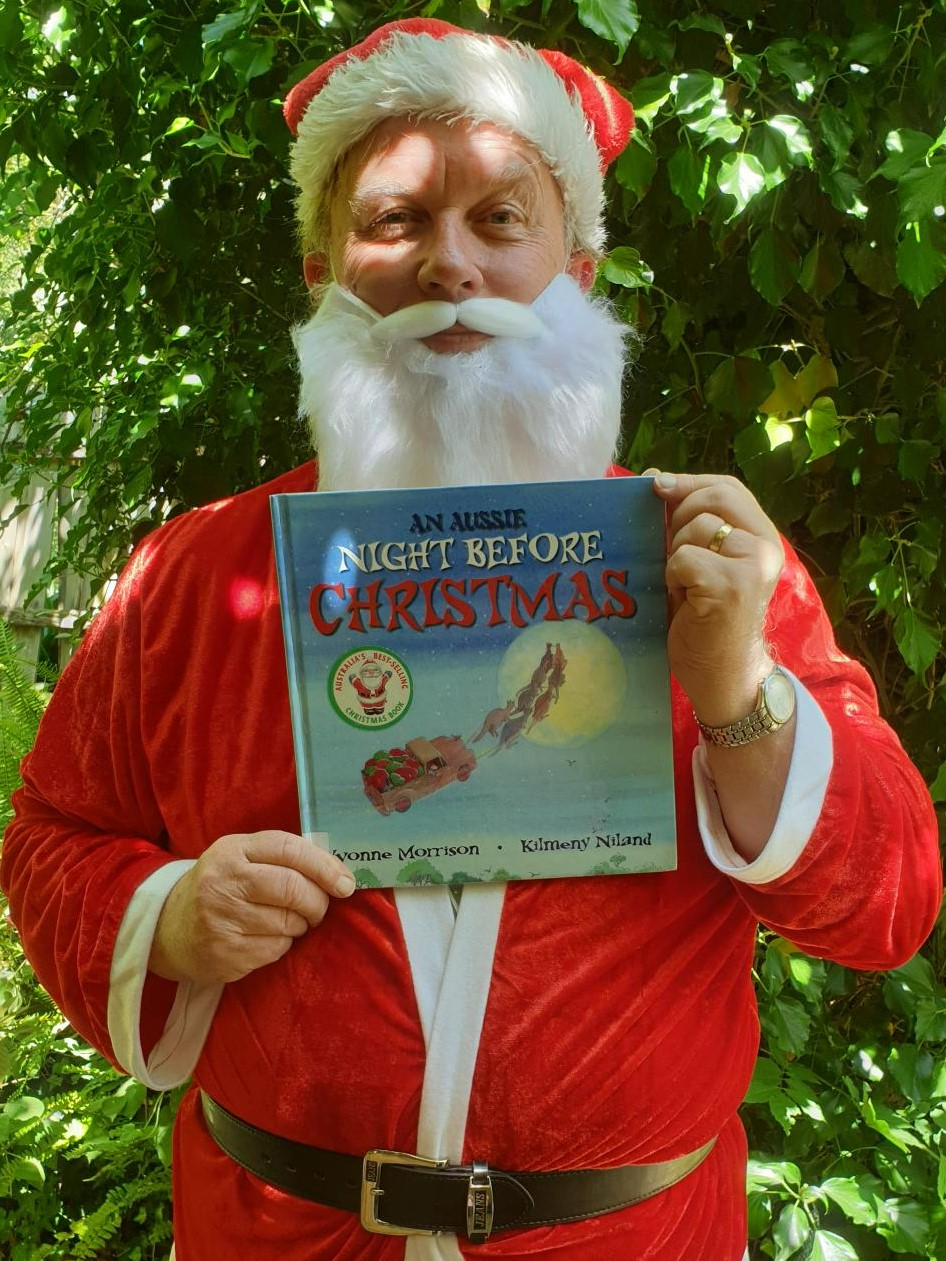Book Reviews

Book Review by Rheya Goetjens
‘Mockingjay’ by Suzanne Collins
'Mockingjay' is a part of a trilogy called The Hunger Games, written by Suzanne Collins. This book is perfect for readers interested in young adult dystopian novels. The series’ protagonist is a 17-year-old girl who caused chaos and mayhem in her country, Panem.
Katniss Everdeen was a previous victor of the 74th hunger games alongside Peeta Mallark whilst pretending to be lovers for the cameras and all of Panem. 'Mockingjay' brings a wrenching conclusion to the tale.
At the end of 'Catching Fire' (the second book of the trilogy), Katniss Everdeen is wandering through the wreckage of her District 12 hometown tripping over skulls and breathing in the ashes of the incinerated bodies that used to be her neighbours. Alongside her are a camera crew and her prep team who came from the hidden town of District 13 and are there to film her reaction to the destruction and get Katniss’s voice out to Panem as the rebellion’s “Mockingjay”.
The star-crossed lovers we once knew from the previous books are falling apart. During Peeta’s time being held captive in the capital, he was chemically affected, and his memories were altered making him have a hard time deciphering reality from the altered memory. Katniss has the pressure of District 13 and their president Coin on her shoulders. They’re looking to Katniss to rile up the rest of the districts and overthrow the pale-skinned President Snow. On this journey, Katniss loses ones very close to her and takes this upon herself.
“President Snow says he’s sending us a message? Well, I have one for him. You can torture us and bomb us and burn our districts to the ground, but do you see that?” One of the cameras follows as I point to the planes burning on the roof of the warehouse across from us. The Capitol seal on a wing glows clearly through the flames. “Fire is catching!” I am shouting now, determined that he will not miss a word. “And if we burn, you burn with us!”
This moment really turns around Katniss’s chances of providing authentic footage for her prep team’s “propos” and succeeding in her role as the rebellion’s “Mockingjay.” After witnessing a District 8 hospital she just visited get destroyed by Capitol planes, she gives this very powerful monologue targeted at President Snow, saying that he will go down with the citizens of Panem, regardless of the rebellion’s outcome.
The rest of the book really takes some truly surprising twists and turns from there. Unfolding in Collins’ engaging, intelligent prose and assembled into chapters that end with didn’t-see-that-coming cliff-hangers, this finale is every bit the pressure cooker of its forebears.
“You love me. Real or not real?” I tell him, “Real”
I don’t think there could have been a better transition between the previous moment in the book and this one. While he is not fully recovered from his hijacking, at least not completely, Peeta brings that kind of fire to Katniss during her darkest hour when Gale could not, especially when he was the indirect cause of death to someone close to Katniss. So, when she says “real” it’s clear to the reader that she means it.
I personally think this series was one of the best I’ve ever read. This heart-aching end to the sequence was by far the darkest but it really brings to light the absolute despair of Katniss Everdeen’s life and the havoc of Panem. I will recommend this whole series if you want your heartstrings played with.
Book Review by Zenani Onekon
‘The Amanda Project by Stella Lennon
The book’s main characters are Nia, Callie, Hal, and Amanda. All told from Callie’s perspective. At school, Callie is one of the I-Girls (think ‘Mean Girls’) a social circle made up of the most popular girls in the ninth grade.
Nia is a girl at school considered a social outcast due to an incident that happened a time ago. Perpetrated by one of the I-Girls, Heidi. Hal at school is considered a ‘neutral’ meaning he is neither popular nor is he unpopular.
“You’re wanted in the vice principal’s office.”
For a split second it was as though I’d just been addressed in a language other than English; I literally couldn’t make sense of the words she’d spoken.
“I’…?” I repeated stupidly.
“You can take your things,” she added, bobbing her head with its tight bun.
Suddenly I wasn’t confused anymore, I was frightened.
Callie thinks she has nothing in common with the two, so when she is called into Vice Principal’s office and finds Hal and Nia already in there, she thinks there must be a mistake.
Amanda Valentino is well known as school, as someone who says what she thinks and acts how she wants. And the only thing Hal, Nia and Callie have in common is their Friendship with her.
When the three discover Amanda’s disappearance (whom at first, they all claim not to know) they decide to band up to find her, their only help being a couple of very frustrating clues. Nia is hostile towards Callie at first due to her status as an I-Girl but slowly warms up to her.
Meanwhile Callie learns that she always made up a whole new persona when she was with the I-Girls and was never truly herself unless she was with Nia, Hal and before her disappearance Amanda.
As the search for ensues, they discover several truths about Amanda. One, each of them have a different version of Amanda’s life, and the stories don’t add up. Two, that none of them really knew Amanda.
The big question is, who is Amanda Valentino? where did she go? why did they lie to them? And were there any others who knew her? This book is a very compelling and engaging read, as we follow Callie and her new friends to find an old one (Amanda).
Book Review by Denise Gibbs
‘Believe Me’ by Taherah Mafi
"Five more minutes," she says. "I promise."
I hear the rustle of fabric. Zippers. A shudder of-
"Is that tulle?"
"You're not supposed to be listening!"
"You know, love, it occurs to me now that I've lived through hostage situations less torturous than this."
"Okay, okay, it's off. Packed away. I just need a second to put my cl-"
"That won't be necessary," I say, turning around. "Surely this part, I should be allowed to watch."
I lean against the unusually white wall, studying her as she frowns at me, her lips still parted around the shapes of a word she seems to have forgotten.
"Please continue," I say, gesturing with a nod. "Whatever you were doing before."
She holds on to her frown for a moment longer than is honest, her eyes narrowing in a show of frustration that is pure fraud. She compounds this farce by clutching an article of clothing to her chest, feigning modestly.
I do not mind, not one single bit.
I drink her in, her soft curves, her smooth skin. Her hair is beautiful at any length, but it's been longer lately. Long and rich, silky against her skin, and-when I'm lucky- against mine.
‘Believe Me’ is book number 6.5 and the final book in the book series, Shatter Me, by Tahereh Mafi. This book takes place after The Reestablishment when Warner and Juliette (aka Ella) are getting ready for their wedding. All their plans were going well until Warner was informed by Nouria that due to all the destruction that had been caused by The Reestablishment, their wedding plans are going to be delayed. This causes Warner to doubt if he and Juliette would ever get married.
I look away. My heart seems to be racing in my head now, pounding against my skull. I feel myself dissociating- detaching from the moment-and struggle to remain present.
"Is this some kind of perverse revenge?" I ask. "Are you trying to prevent my wedding because I won't let you bring in civilians? Because I refuse to put Juliette's life in jeopardy?"
Nouria is quiet for so long I'm forced to look up, to return my mind to itself. She's staring at me with the strangest look in her eyes, something like guilt-or regret-washing her out completely.
"Warner," she says quietly. "It was Juliette's idea."
Warner starts to feel like Juliette is becoming distant and keeping something from him. In the meantime, he keeps himself occupied with work so that he doesn’t have to worry about the wedding and how much he misses Juliette.
The next day, Juliette and Winston tell Warner that there is a surprise for him and that Juliette and Warner are going to get married after being told on the previous day that their wedding would have to be postponed for a while. Once they get to the place where they are having their wedding, they are greeted by people organising things for them. Both Juliette and Warner are then taken away to get ready for the wedding where the finally get their happily ever after.
Ella glides towards me, nearly within reach. I feel my heart pounding in my chest, happiness threatening to destroy me. I'm smiling now, smiling like the most ordinary of men, staring at the most extraordinary woman I've ever known.
"Believe me," I whisper. "I do."
The main reasons why I chose this book was because the cover looked eye catching and the story sounded interesting based on what I read in the blurb. I would highly recommend starting with the first book in the series, Shatter Me, instead of starting with the last book like I did and recommend this book for people who enjoy reading dystopian books.
Book Review by Chris Marriott
‘Nettle and Bone’ by T. Kingfisher
The trees were full of crows and the woods were full of madmen. The pit was full of bones and her hands were full of wires…
The charnel pit was full, but she did not need to dig too deeply. She could track the progression of starvation backward through the layers. They had eaten deer and thy had eaten cattle.
When the cattle ran out and the deer were gone, they ate the horses, and when the horses were gone, they ate the dogs.
When the dogs were gone, they ate each other.
Everyone should read this book.
In fact, go and read the book and skip this review…
Marrying traditional fairy-tale tropes with feminist fable, ‘Nettle and Bone’ follows the trials of a less-than-typical princess. As the third daughter of the queen of a tiny nation, Marra watches her older sisters get married off to protect the country. When it becomes obvious that they are paying too high a price, Marra sets off on a quest to save them.
Charged with the completion of three impossible tasks, Marra is joined by an enigmatic dust witch, her demon-possessed chicken, and a noble-yet-broken cavalier. This unlikely group undertakes a fantastic journey to kill the handsome prince, a journey at once fairy-tale familiar and delightfully unique.
She could not remember ever feeling such a thing before. There was no call to nurture intellectual curiosity among princesses. She did not even quite know what to call it. It felt like a light shining in her chest and she could see just a little way ahead, and that was enough to keep her going forward. There was no one to tell her what she wanted to know or whether the information even existed. She had no one to share her excitement with, but she did not mind, because it did not occur to her that anyone else might care.
I cannot recommend this book enough. The balance between insightful exploration of social structures and entertaining stories is incredibly difficult to do right, yet Kingfisher has managed it beautifully in this novel. The everyday heroism of the central characters rings true and inspires the reader to compare their plight with that of many in our own communities. ‘Nettle and Bone’s striking imagery, rich imagination, and the lesson that we should never wait for the handsome prince to rescue us make this a wonder-filled modern-day fable.
Everyone should read this book.
Book Review by Sue Glenn
‘Who Moved my Cheese?’ & ‘Out of the Maze’ by Dr. Spencer Johnson
What does cheese have to do with life?
Who Moved my Cheese? is a parable designed to help you decide if you are a person who adapts to change and how well you might do it.
There are four characters. Sniff and Scurry are mice. Hem and Haw are Littlepeople – beings as small as mice, but like people. They all live in a maze with cheese to eat. But what happens when the cheese starts to run out? Do you trust that it won’t, or go looking for more cheese?
Each of the characters has a different attitude toward finding the cheese. And what is fair or not.
Finding Cheese wasn’t easy, and it meant a great deal more to the little people than just having enough of it to eat everyday. Finding Cheese was the little peoples’ way of getting what they though they needed to be happy. They had their own ideas of what Cheese meant to them, depending on their taste. For some, finding Cheese was having material things. For others it was enjoying good health, or developing a spiritual sense of well-being. For Haw, Cheese just meant feeling safe, having a loving family someday and living in a cozy cottage on Cheddar Lane. To Hem, Cheese was becoming A Big Cheese in charge of others and owning a big house atop Camembert Hill.
Decide which character you might be as you read the story. You will recognize each of the characters in the people around you. Then decide if you need to change. The follow-up book, Out of the Maze, gives you tools to help make changes. It also introduces Hope, a new Littleperson:
The Stranger was holding out another rock to him. Hem took it and ate it. It certainly wasn’t Cheese, but it was tasty, and as he ate he felt his energy returning, ever so slightly. The Stranger talked to him while he ate his rock. Her name was Hope, and she lived nearby, at a place called Fruit Station A. “Fruit,” she said, was what the rocks were called. She also said they were called “Apples. ”By this time, Hem was on his third Apple. Hope told Hem that the fruit had been getting scarce lately, and that for the past few days she had been exploring different parts of the Maze, looking for new supplies. “It used to be that every day when I woke up, there would be more apples,” she said. “But that’s been happening less and less. “Actually,” she said, pointing to the piece of fruit Hem was now eating, “that’s my last one.”
It poses questions to help you to think differently and see things differently. If you are looking at your life and thinking “It’s all too much”, then these books can help! The questions are simple, but the message is powerful. Success can be yours! I first read Who moved my Cheese several years ago, but the message stuck with me. Out of the Maze was released more recently and upon reading it, I learned how much Who moved my Cheese changed my thinking. The questions posed also struck a chord. If you seem to be stuck in a rut, these books can help you, if you let them. They are also quick to read!
Book Review by Brigitte Marian
‘The Ocean at the End of the Lane’ by Neil Gaiman
“Childhood memories are sometimes covered and obscured beneath the things that come later, like childhood toys forgotten at the bottom of a crammed adult closet, but they are never lost for good.”
I struggled a little bit in starting to review this book, so I’ll start by asking this: Do you ever sit and ponder about the events that happened during a particular part of your childhood, no matter how grand or small, dull or strange, magical or frightening they were? Do you miss it?
Everyone’s childhood will differ from others, and many books or television series will try to recapture that spark of those lost feelings of childlike wonder, imagination, and fears. But I don’t believe many succeed as well as British author Neil Gaiman in remembering what it was like to be a child. Known for his brilliant variety of works such as American Gods, the comic series The Sandman, and children/teen books like Coraline and The Graveyard Books, Gaiman recreates the beautiful and haunting nostalgia of childhood and explores themes of memories, identity, and the disconnect between childhood and adulthood in his novel The Ocean at the End of the Lane.
Published in 2013, the story follows an unnamed man who is returning to his small, isolated hometown in Sussex to attend a funeral. Driving away from the funeral he ends up at an old farmhouse from his past. He delves into his memory and remembers a man who committed suicide in a stolen car, a wonderful, comforting girl who claims the pond is the ocean and who is wise beyond her years, and a wild, magical but horrifying darkness that was experienced by a boy who had only just turned seven.
Using magical realism and his understanding of fairy tales, Gaiman evokes the inner child in all of us and paints scenes full of colours and sounds through beautiful wordcraft that feels relatable or understandable. Gaiman also subtly approaches ideas and themes about growing up such as childhood traumas and he teaches us that we never have to completely dissociate ourselves from our child-self.
I think this book is a great read for both teens and adults, with a great mix of magic, fantasy, and horror (which is where some mature themes appear). To me, The Ocean at the End of the Lane captures what childhood is like and why sometimes remembering and holding onto memories are not always a bad thing.
My one gripe with this book, however, is that I always get hungry when I read the abundant descriptions of the wonderful food the protagonist gets to eat!
Book Review by Tanika Phlong
‘How the Grinch Stole Christmas’ by Dr. Seuss
Every Who
Down in Who-ville
Liked Christmas a lot…
This book is written by Dr. Seuss. It's about the Grinch who hated Christmas, the whole Christmas season, and how he stole Christmas. In this book, the rhythms are good and funny, and the design of the Who girls and boys look different in the book and the movie.
I love this quote
"But I think that the most likely reason of all may be that his heart was two sizes small."
It might have a deep meaning and help better understand the Grinch. It is interesting that he has a backstory.
There was this character named Cindy-Lou who lived in Who-ville and she liked Christmas. She was getting a glass of cold water one night when she encountered the Grinch. She asked the Grinch questions (who was dressed like a fake Santa Claus) like
"Why are you taking our Christmas tree?"
The Grinch thought of a lie telling her that the lights on the tree weren't working so he would have to take it to his "workshop" to fix it.
Cindy got fooled by the grinch, and the Grinch sent her to bed.The Grinch dressed up as "Santa Claus" and tricks the characters of Who-ville and takes away all their presents.
And what happened then…?
Well, in Who-ville they say
That the Grinch’s small heart
Grew three sizes that day!
And the minute his heart didn’t feel quite so tight,
He whizzed with his load through the bright morning light
And he brought back the toys! And the food for the feast!
So, at the end of the story Christmas didn't get stolen by the Grinch, the Grinch instead gives all the presents, Christmas trees, and all the Christmas items back.
And he…
…HE HIMSELF…!
The Grinch carved the roast beast!
Book Review by Geoff Shinkfield
‘An Aussie Night Before Christmas’ by Yvonne Morrison
This lovely children’s book is an adaptation of the famous festive poem ‘Twas the Night Before Christmas’ written by Clement Clarke Moore. The original poem was first published anonymously as ‘A Visit from St. Nicholas’ in a New York newspaper named The Sentinel on December 23rd, 1823. It became so popular that eventually, Clement Clarke Moore admitted his authorship in 1837, and the popular title ‘‘Twas the Night Before Christmas’ was adopted for evermore.
Yvonne Morrison’s adaptation of Moore’s poem is an attempt to give the poem a fresh Australian context for Australian children who may not be familiar with the nineteenth-century New York version of Santa Claus. Indeed, Moore is credited for developing the familiar image of Santa Claus, having admitted that his portrait was based partly on the European St. Nicolas and a local Dutch handyman who operated a sleigh that Moore regularly took home on the snow-covered streets of Manhattan from the city of New York to his mansion at his estate in Chelsea, north of the city. The idea of a bearded old man in a sleigh pulled by reindeer appears to be Moore’s original idea, as were the names of the reindeer.
In Morrison’s book, beautifully illustrated by Kilmeny Niland, Moore’s opening lines about a mouse are appropriately replaced by an Australian marsupial:
‘Twas the night before Christmas; there wasn’t a sound
Not a possum was stirring; no-one was around.
The verse is complemented by a painting of three possums fast asleep under a rug at the top of a gum tree, with three Christmas stockings hanging from an adjacent branch.
The next verse really starts to ‘Aussify’ the old poem, and this is where Australian kids and adults will start to relate to it:
We’d left on the table some tucker and beer,
Hoping that Santa Claus soon would be here;
I know that on Christmas Eve, growing up in Adelaide, my siblings and I always left out some ‘good tucker’ for Santa, mostly cheese and biscuits but it was never beer, just a glass of milk. And carrots for the reindeer! I love the image of the two Aussie kids at the kitchen table leaving cupcakes and lamingtons along with ‘Santa’s Special Ale’.
Later in the book, with the kids tucked up in bed, they are awoken, of course, by Santa. However, unlike the original, where the children spot a ‘miniature sleigh and eight tiny reindeer’ driven by St. Nick, in this delightful version, the Aussie kids are woken up from their ‘snooze’ by ‘a rusty old ute pulled by eight mighty ‘roos’.
To complete the story the Aussie Santa calls out the names of the flying kangaroos that are pulling his Holden Ute. No Dasher, no Dancer, no Prancer, no Vixen, no Comet, no Cupid, no Donner, no Blitzen! Morrison has her Santa use some classic Aussie names for his kangaroos:
‘Now Kylie! Now, Kirsty! Now Shazza and Shane!
On, Kipper! On Skipper! On Bazza and Wayne!
Park up on that water tank, grab a quick drink.
I’ll scoot down the gum tree. Be back in a wink!’
Of course, Santa makes an appearance in the house, and I love this description of him (and the illustration of him) after he slides down the Gum Tree and in through the window.
He had bright sunburned cheeks and a milky white beard.
A jolly old joker was how he appeared.
He wore red stubby shorts and old thongs on his feet,
And a hat of deep crimson as shade from the heat.
This parody version of ‘Twas the Night Before Christmas acknowledges the fact that Australian children celebrate Christmas in the heat of Summer, and I love that this Aussie Santa is appropriately dressed for our climate. The poem finishes as Aussie Santa distributes his ‘prezzies’ under the ‘Yule tree’, and then strolls out onto the deck and prepares to ‘shoot through’ with his ute and eight kangaroos, leaving the reader to laugh at his parting line: ‘Merry Christmas to all and goodonya mates!’ An Aussie Night Before Christmas is a classic reimagining of a well-loved but dated old poem that gave the world the modern version of what Santa Claus is all about, however, this one is fair dinkum! Crikey!
Merry Christmas!

